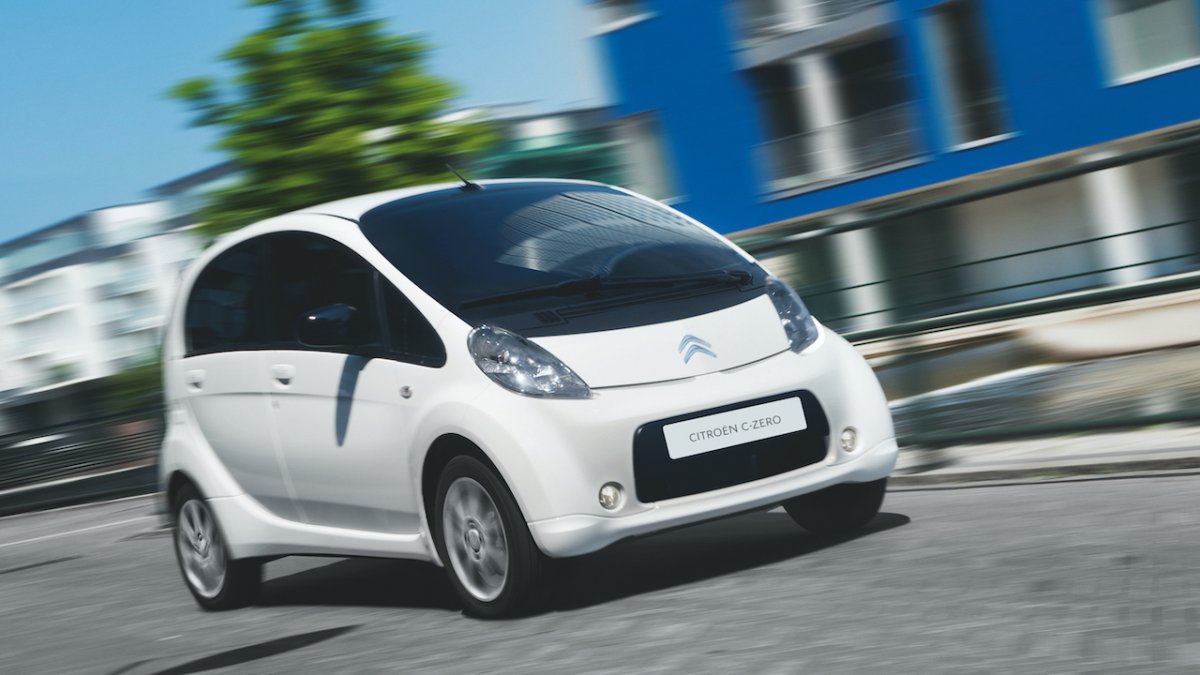Applause from the founding fathers: Mitsubishi i-MiEV, Peugeot iOn & Citroën C-Zero
Source: Heise.de added 28th Dec 2020This article is the fourth part of a series, which is about exciting automotive pioneers that are about to be forgotten. Because mostly their courage was not crowned with success.
Part 1: The lightning bolt that nobody wanted: Audi duo, first hybrid on the market
Part 2: Nothing was Roger: General Motors’ first EV1 electric car
Part 3: The opposite of diesel: Volvo V 60 Diesel plug-in hybrid
Is that supposed to be the starting gun? Mitsubishi i-MiEV, Peugeot iOn and Citroën C-Zero should convince the world of electromobility? Phew The future would certainly have wished for better and prettier ambassadors. But there it was, the electric car trio that motorists from the year 2009 of should convince the advantages of fuel-free locomotion.
There are just nine years of development time between the Mitsubishi i-MiEV and the Kia e-Niro. It is just an example of the current generation of electric vehicles. They are full-fledged cars, with no limitation due to the drive. From the outside, often only to be identified as electric cars for those in the know.
The progress can be poured into numbers The Kia e- Niro is suitable as a comparison vehicle because it is currently available for a base price of 34.400 Euro is available. That is 451 euros less than the Mitsubishi i-MiEV when it was launched has cost. The advancement of technology can be expressed in numbers. The basic Kia has twice as many horsepower (136 PS), twice as much range (289 kilometers ) and three times as much trunk volume (400 liters) as the Mitsubishi i-MiEV.
This sets out a framework within which the development is moving, but the effects have not yet been explored. Anyone who has sat in both vehicles can hardly imagine that it is a car for almost the same price. The Mitsubishi i-MiEV is uncomfortable, impractical and slow compared to the e-Niro. Not to mention the barren plastic landscape in the interior.
The first large-scale electric car Actually, it’s not Problem. This is how technical progress works. The Mitsubishi i-MiEV was quite improperly the first electric car to be built in large series. And because the first impression counts, it should have a lasting impact on the public’s image of electric mobility. Annoying. Because almost at the same time in the USA the first Tesla Roadster made the competition look like carriages from the Middle Ages. But that’s another story.
Mitsubishi i-MiEV, Peugeot iOn & Citroën C-Zero (5 pictures) The Mitsubishi i-MiEV should shape the image of electric mobility in Europe. (Image: Mitsubishi
)
In German ears already lost The problem of the Mitsubishi i-MiEV starts with the name. The acronym stands for “Mitsubishi innovative Electric Vehicle” and pronounces itself “Egg-Mief”. In German ears, the car had lost before the potential customer even saw it. But even then it didn’t get any better. The MiEV is a kei car and they have never had a chance in Europe. Whether with an electric or gasoline engine. Mitsubishi evidently believed that the introduction of electromobility would also involve a fundamental rethinking of traffic. Towards smaller cars. That wasn’t the case.
World record from the niche But with ten years away it is easy to criticize. The fact is that Mitsubishi discovered a niche before the competition and served the customers. There was even an entry in the Guinness Book of World Records for it. In February 2010 the Mitsubishi i-MiEV was the first electric car, of which more than 10. 000 pieces were sold . The two identical models from Peugeot and Citroën are included here.
Serious car companies instead of hobbyists’ corner Because with this car – and its structurally identical siblings Peugeot iOn and Citroën C-Zero – electromobility came out of the hobbyist’s corner. The trio gave this technique no emotion or euphoria, but a flair of professionalism. Mitsubishi, Peugeot and Citroën weren’t wild hobbyists who screwed cell phone batteries to better toy engines, but serious car companies.
Success within narrow limits The Mitsubishi i-MiEV was ahead of its time. Despite the shortcomings, numerous magazines, expert committees and the FIA automobile association received various awards as the best electric car or the best vehicle with alternative drives. Nevertheless, the success was limited. Worldwide sales began in the year 2009. In March 2020 (C-Zero and iOn) and in autumn (i-MiEV) the Production stopped. If you add up all three cars, you get round 50. 000 pieces sold. For comparison: The Nissan Leaf (Leading Environmentally-friendly Affordable Family Car) came on the market a few months later (December 2009), but has since been 500. 000 Times sold.
(fpi)
brands: Audi Basic Best Built Diesel General Motors ION Mitsubishi Nissan media: Heise.de keywords: Phone
Related posts
Notice: Undefined variable: all_related in /var/www/vhosts/rondea.com/httpdocs/wp-content/themes/rondea-2-0/single-article.php on line 88
Notice: Undefined variable: all_related in /var/www/vhosts/rondea.com/httpdocs/wp-content/themes/rondea-2-0/single-article.php on line 88
Related Products
Notice: Undefined variable: all_related in /var/www/vhosts/rondea.com/httpdocs/wp-content/themes/rondea-2-0/single-article.php on line 91
Warning: Invalid argument supplied for foreach() in /var/www/vhosts/rondea.com/httpdocs/wp-content/themes/rondea-2-0/single-article.php on line 91
